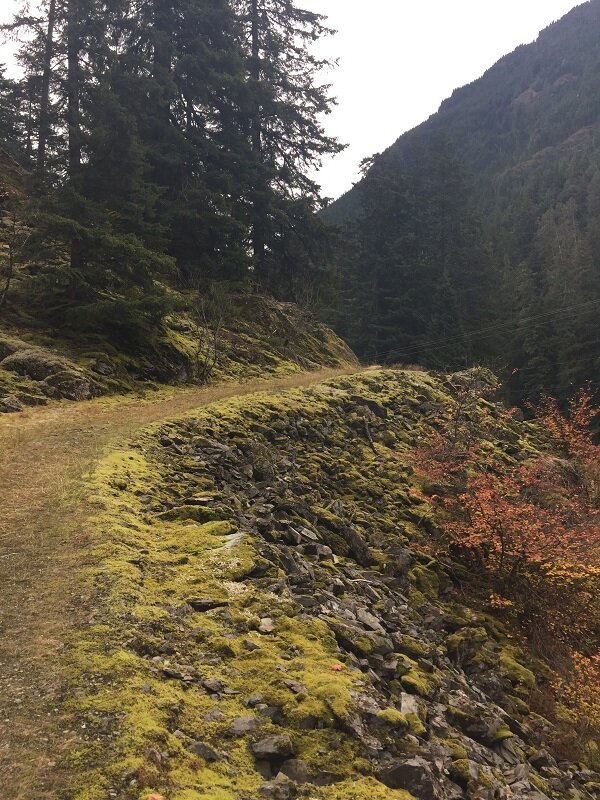Royal Engineers and Coquitlam
The news of gold in British Columbia in 1857 brought a huge influx of people looking to make a fortune. A lot of these people hailed from the United States, specifically California, where that gold rush was winding down. The British, concerned that their brand-new colony, officially established in 1858, was in jeopardy of being claimed by the United States, sent Royal Engineers to BC to help bring order.
The Royal Engineers, also known as Sappers, are a corps of the British Army that are known for providing engineering services and technical expertise. They have existed in various capacities since William the Conqueror brought engineers with him to England in 1066. Perhaps their biggest claim to fame is the building of tunnels behind enemy lines during WWI. Canada’s Sappers were instrumental to the success of the Battle of Vimy Ridge. The term Sapper came from this, as sappe is French for “spade work” or “trench.”
ROYAL ENGINEER MAP OF BRITISH COLUMBIA, 1859.
The group that arrived in BC, the Columbia Detachment, were under the command of Colonel Richard Moody. They were tasked with establishing bridges and roads, parceling Crown land into lots, officially surveying the 49th parallel, and to assist in maintaining law and order amongst the thousands of men who had arrived in the colony. In performing their duties, they dispossessed many of the region’s Indigenous peoples. Much of BC’s current geographical makeup is due to the work of the Sappers. Using existing Indigenous trails they began to establish roads up to popular mining spots to make the movement of people and goods easier. Land was surveyed, divided up, and sold.
The work was incredibly difficult. BC’s mountainous terrain made road building challenging, they had to pack all their food and supplies with them. Some of the Royal Engineers died on the job, and more got sick or were injured. What they succeeded in doing was an amazing feat of engineering: roads, bridges, and tunnels that connected BC to the rest of the world. Nowadays as you drive through BC, you may come across Stops of Interest signs about the Royal Engineers, along with remains of some of the original roads.
THIS IS ONE OF THE ORIGINAL ROADS BUILT BY THE ROYAL ENGINEERS. IT CAN BE FOUND NEXT TO THE HOPE-PRINCETON HIGHWAY, JUST EAST OF HOPE.
Closer to home, the Royal Engineers built North Road to connect New Westminster, which was British Columbia’s capital at the time, to the end of Burrard Inlet. Quick access to the inlet was deemed imperative in the event of an attack on New Westminster from the Americans; this would allow military supplies to be unloaded and brought in if needed. While no attack ever came, a town began to form, and in 1859 the town was named Port Moody after Col. Moody. Along North Road there is a sign commemorating the work of the Royal Engineers; as well as some of the electrical boxes on the street are painted in their honour.
Their work finished, the Royal Engineers, Columbia Detachment was disbanded in July 1863. Many of the men were offered land for their service. Col. Moody and his family, along with twenty-two men and eight wives sailed back to England. The rest, one hundred and thirty Royal Engineers, took up the offer to stay. They married Indigenous women, or women brought in on British brideships and settled throughout the Lower Mainland. Sapperton is a neighbourhood in New Westminster where the Sappers’ barracks were located. Some settled in Coquitlam, becoming some of the City’s first Caucasian settlers. Due to the fact that Coquitlam was deeply forested and had access to rivers for transportation, many began working the land for lumber, beginning Coquitlam’s history of millwork.
SIX ROYAL ENGINEERS FROM THE COLUMBIA DETATCHMENT, 1859
Today so many of the local place and street names in the Lower Mainland and elsewhere in BC are named after Royal Engineers and their families. Many of the streets in Port Moody are named after Sappers and their families. Mary Hill in Port Coquitlam is named after Moody’s wife, Mary. Burnaby, Lytton, Dewdney, Gatensbury, Clarke Road, these are just some of the places named after Sappers.
To learn more about the Royal Engineers and see some of the surveying tools they used, check out our exhibit Coquitlam’s Heart of Gold, on display at Mackin House until June 17, 2022!




